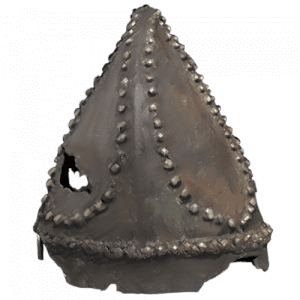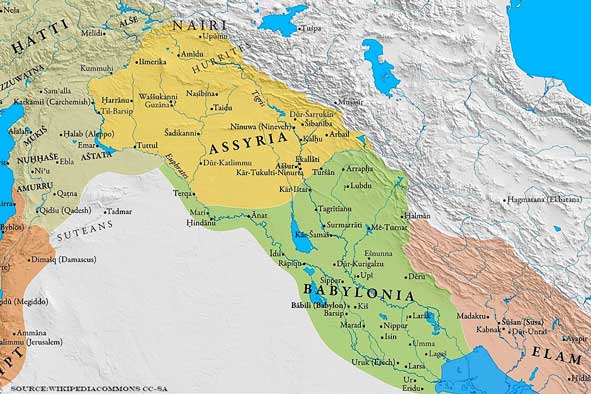Assyria Mesopotamia Lesson Plan
Ancient Assyria Mesopotamia
A World History Lesson Worksheet
An archaeology analysis lesson on the importance of ancient Assyria in Mesopotamia. Activate student interest before playing Excavate! Mesopotamia or use it in your ancient Mesopotamia world history classroom studies. Invite students to describe artifacts and hypothesize their use in ancient Mesopotamia. The methodology is to use describe, interpret, and evaluate (D-I-E) lessons to record archaeology artifact observations during game-play or as a per-lesson activity to check their hypotheses for accuracy. It is a fun way to prepare and engage with content while playing Excavate! Mesopotamia or just incorporate in your ancient Mesopotamia lesson plan.
Award Winning Excavate! Mesopotamia
Worth Every Penny
Loved by Thousands of Students and Educators
Assyria Mesopotamia Lesson Overview
Objective:
Students will describe and infer the significance of Mesopotamian artifacts found in an archaeological site in preparation for playing the Assyria site in Excavate! Mesopotamia or your Ancient Mesopotamian lessons.
Duration:
Approximately 30 minutes with a potential follow-up lesson of 20 minutes (after playing the Assyria Mesopotamia site of Excavate! Mesopotamia) or your standalone unit activity.
Materials:
This history lesson worksheet PDF document includes:
- Student D-I-E organizer
- Artifact Resource Sheet for the Assyria Mesopotamia site
- Teacher answer sheet for the D-I-E organizer
Includes Ancient Mesopotamia lesson for Assyria, Babylon, and Ur.
The Assyrian Artifacts
Four Artifacts for Students to Analyze in the Lesson Plan
Lamassu
Helmet
Sculpture Relief from Ashurbanipal’s Hunting 2 Lions
Wall Panel of Irrigation Canal
Introduction: Describe
Estimated Time: 15 minutes
In this part of the worksheet activity you explain to students that they will be exploring artifacts related to the ancient city of Assyria Mesopotamia. Their first job is to carefully preview the artifacts by describing them in detail.
Step 1: Students look carefully at artifacts on the Artifact Resource Sheet.
Step 2: Students write descriptions of each artifact in the describe column of the Student D-I-E Organizer. Pay close attention that students are only writing descriptions and not explaining what the artifact is and how it is used.
Step 3: Share as a class the descriptions and notice if anyone has found a new detail or something that they initially did not see. Emphasize that spending time on the description step of this process is necessary for seeing all the details that can generate new insight.
Preparing to play Excavate! Mesopotamia: Interpret
Estimated Time: 15 Minutes
Playing the game is of course optional but if you can incorporate the game into your lesson unit it works best.
Step 4: Students hypothesize what each artifact would have been used for by answering the questions in the Interpret column of the Student D-I-E Organizer. Push students to back up their thoughts based on what they have included in their description.
Step 5: Share as a class and keep a record of what students think of each one of the artifacts. Do not correct students. Explain that as they play the game they will encounter these artifacts and will find out if their hypotheses were correct.
“Learning through the game based format really connects learners of the 21st century to education, and helps them discover things that they may not have been interested in…”
Samantha McClusky
Post-Game Recap: Evaluate
Estimated Time: 20 minutes
Step 6: Play the Assyria Site of Excavate! Mesopotamia. Have students correct their interpretations on the Student D-I-E Organizer.
Step 7: Share new observations learned about each artifact while playing Excavate! Mesopotamia.
Step 8: Have students complete the Evaluate column in the Student D-I-E Organizer. See examples on the Teacher Answer Sheet.
This activity could be extended as follows:
Facilitate discussion on the importance of Assyrian society and how these artifacts have facilitated new insight.
Have students write a reflection on which artifact was the most surprising and why.
Sample Artifact Answer Key
Note: the PDF download contains all keys
Item:

Describe: What is the material of the artifact? What is its shape? Does it have any symbols?
Stone. Animal and man features.
Teacher Reveal: This is a stone work.
____________
Interpret:
What is it used for? What is this object?
This is a statue of a mythological being.
Teacher Reveal: This is a statue of a guardian.
____________
Evaluate:
What does the artifact tell us about the people that used this artifact? What does the artifact possibly tell them about their society?
Teacher Reveal: The Lamassu were winged bulls with bearded human faces which acted as guardians for the city. They are thought to have begun in Ur as household protective spirits before they began the protectors of the entire city, usually places outside the gate, or inside the king’s palace.
Did you know?
Assyria’s name comes from its first capital city Assur located on the Tigris River in Mesopotamia now in Northern Iran. Assur gets its name from the deity Ashur, the head of the Mesopotamian pantheon.
Teacher Resources
Artifact Based Question Prompts
These are additional lesson plan worksheets provided by DiG-iT! Games. Use this scene combined with artifacts from the game to have your students answer a DBQ assignment that will demonstrate their learning. (rubric included)
Teacher & Content Guide
A step-by-step guide for game-play as well as a resource containing all content and answers. (2 Files – Excavate Overview & Mesopotamia Content Guide)
The Cuneiform Writing System in Ancient Mesopotamia: Emergence and Evolution
Six additional lesson plans from the National Endowment for the humanities. The target grade levels are 6-8
World History Games
Explore all the Excavate! game titles including the empires of Rome, Greece, Egypt, Mesopotamia, MesoAmerica and Byzantine.



